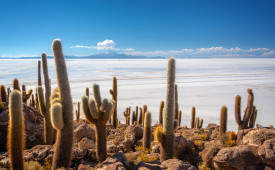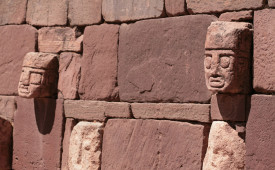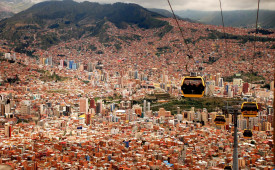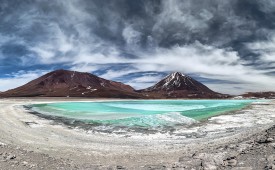-
Latin America
Latin America
- Countries (hidden space)
- Galapagos & Ecuador
- Guatemala
- Mexico
- Panama
- Peru
- Popular Attractions
- Machu Picchu
- Inca Trail
- Easter Island
- Galapagos Islands
- Patagonia
- Rio de Janeiro
- Iguazu Falls
-
Africa
Africa
- Spacer Africa
- South Africa
- Zimbabwe
- Popular Attractions
- Cape Town
- Okavango Delta
- Sossusvlei Dunes
- Victoria Falls
- The Kruger
- The Garden Route
- Masai Mara
-
Asia
Asia
- Spacer Asia
- Laos
- Sri Lanka
- Uzbekistan
- Vietnam
- Popular Attractions
- Taj Mahal
- Lion Rock (Sigiriya)
- Angkor Wat
- Ha Long Bay
- Kyoto
- Europe & Middle East
-
Destinations
- Latin America
- Argentina
- Bolivia
- Brazil
- Chile
- Colombia
- Costa Rica
- Galapagos & Ecuador
- Guatemala
- Mexico
- Panama
- Peru
- Asia
- Borneo (Malaysia)
- Cambodia
- India
- Japan
- Laos
- Sri Lanka
- Uzbekistan
- Vietnam
- Middle East
- Jordan
- Southern & East Africa
- Botswana
- Kenya
- Namibia
- South Africa
- Zimbabwe
- Europe
- Slovenia
- All Holiday Destinations
- Contact Us
-
About
About
Llama Travel provides high quality holidays at the lowest possible prices.
99% recommend us Lower prices - guaranteed Financially protected by ATOL
Travelling to Bolivia
Travelling in Bolivia
-
Food
Yuca and potatoes loom large in the landscape of Bolivian cuisine, particularly in the Andean highlands. The starch element of any meal is inevitably served up with meat, often fried or sautéed beef and/or sausage mixed with a vegetable.
Typical dishes to try are Pique a lo Macho, a mountain of beef, thick-cut chips, spicy pepper, onion and boiled eggs, or Plato Paceño which is corn, lima beans, potato and fried cheese (often accompanied by beef or pork too). For something lighter, salteñas are a small, juicy pasty-like pastry.
There is some regional variation in Bolivian cuisine, with areas along the shores of Lake Titicaca more likely to have fish on the menu; however wherever you go, there will always be the meat and potato option available. In cities like La Paz it is also easy to find restaurants catering to more international tastes, however the likelihood decreases as you move into the more rural areas.
In La Paz, the hotel is situated within walking distance of a variety of eateries, so whether you are interested in trying the local cuisine or prefer to go for a tried and tested bowl of pasta, these options will be easily available.In Bolivia, lunch is traditionally the largest meal of the day, and if ordering from a set-menu be prepared for a 3-course affair.
-
Budgeting for your stay
Both hotels in Bolivia include breakfast, while the Uyuni-segment of this extension includes all meals. In La Paz, a meal for two in a mid-range restaurant will cost about US$15. Many restaurants offer a lunch time set menu which will cost less.
As for drinks, a small bottle of local beer will cost around $2, although it may be more expensive in more remote areas.
-
Money
The currency in Bolivia is the Bolivian Boliviano. When travelling in Bolivia it is advisable to take currency in Bolivianos or US Dollars as sterling is rarely accepted. In larger cities, such as La Paz, there are plenty of ATMs where you can withdraw dollars or Bolivianos. They accept Visa and MasterCard, debit or credit cards, however American Express is less often accepted.
While some establishments do accept cards, it is generally a safer bet to pay for goods and services in cash.When exchanging currency, try always to do so in reputable outlets such as banks or official currency outlets. Avoid changing money on the street if you can avoid it.
Outside of the cities, ATM’s are harder to come by, so when travelling to Uyuni, for example, it is important to stock up on local currency. There is an ATM at Uyuni airport, and the Palacio de Sal hotel in Uyuni does accept cards, but the signal can be intermittent. Travellers Cheques are more or less useless outside of big cities in Bolivia, as are US dollars.
Small change is in short supply throughout Bolivia and many outlets will not accept large bills, so take every opportunity to break notes into smaller coin denominations.
It is always recommended to inform your bank that you are travelling abroad and to which countries. This will allow them to authorise money withdrawals on your account when you are away. Some banks say that this is not necessary; however, we would still recommend contact with your bank as in some cases people have had difficulty in withdrawing currency.
-
Tipping
All tipping is at your own discretion and you are under no obligation to tip. A service charge is usually added to the bill in restaurants and hotels, and it is common to add an extra 5-10% tip.
For private transportation and guiding, such as you will receive in Uyuni, it is normal to tip US$3-5 a day. It is not expected to tip taxi drivers.
-
What to pack - Bolivia
Most of Bolivia sits at a high altitude thus experiencing a dry, sunny climate with average daytime temperatures in the mid-teens. Nights can be very cold, sometimes dropping below -10 degrees. With this in mind, it is important to pack warm clothing that is suitable for layering.
Most of Bolivia uses 220-230 volt outlets, but beware that some older buildings use 110 volt outlets. Power sockets use 2-pronged plugs with either round pins or flat pins.
We recommend you carry a copy of your passport with you at all times.
Please bring any medication you may require from the UK.You can bring whichever luggage you feel most comfortable with: suitcases, soft bags and rucksacks are fine.




